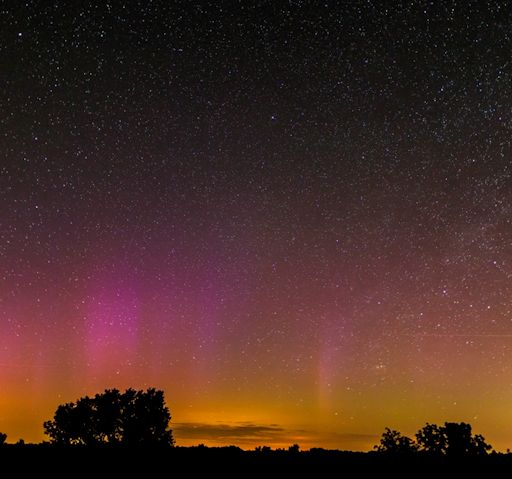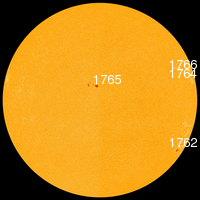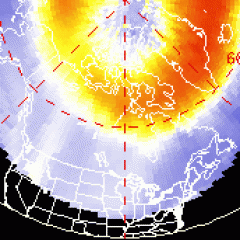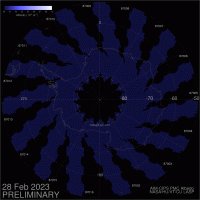Space Weather Update~ Another M 5 Class Solar Flare and Geomagnetic storm [1]
DAYLIGHT METEOR SHOWER: This week, Earth is passing through a stream of debris from asteroid Icarus, source of the annual Arietid meteor shower [2]. The strange thing about this shower is that it occurs mainly during daylight hours. At its peak on June 7-8, as many as 60 Arietids per hour will streak invisibly across the blue sky after sunrise. The best way to observe the Arietids is via radar. Listen to their echoes on Space Weather Radio [3].
NORTHERN LIGHTS IN THE USA: Last night, Earth passed through a region of south-pointing magnetism [4] in the solar wind. This triggered a G2-class (Kp=6) geomagnetic storm. At its peak, the storm spawned Northern Lights as far south as the central USA. "Yes, I really am in Kansas," says photographer Clay Bramhallwho sends this picture from the plains city of Goff, KS:
"The aurora surprised me," he says. "I could see the lights streaking up and down."
More auroras are in the offing. A CME that left the sun on June 5th is expected to deliver a glancing blow to Earth's magnetic field during the late hours of June 8th (or early hours of June 9th). NOAA forecasters estimate a 65% chance of geomagnetic storms when the CME arrives. Aurora alerts: text [6], voice [7].

![]()
Solar wind
speed: 413.6 km/sec
density: 8.0 protons/cm3
explanation [8] | more data [9]
Updated: Today at 0006 UT
![]()
X-ray Solar Flares
6-hr max: M5 2249 UT Jun07
24-hr: M5 2249 UT Jun07
explanation [10] | more data [11]
Updated: Today at: 2359 UT
![]()
![]()
![]()
Daily Sun: 07 Jun 13
![]()
![]()
New sunspot AR1765 is growing rapidly but does not yet pose a threat for strong flares. Credit: SDO/HMI
![]()
![]()
![]()
Sunspot number: 71
What is the sunspot number? [13]
Updated 07 Jun 2013
Spotless Days
Current Stretch: 0 days
2013 total: 0 days (0%)
2012 total: 0 days (0%)
2011 total: 2 days (<1%)
2010 total: 51 days (14%)
2009 total: 260 days (71%)
Since 2004: 821 days
Typical Solar Min: 486 days
Update 07 Jun 2013
The Radio Sun
10.7 cm flux: 109 sfu
explanation [14] | more data [15]
Updated 07 Jun 2013
![]()
![]()
![]()
Current Auroral Oval:
![]()
![]()
Switch to: Europe, USA, New Zealand, Antarctica
Credit: NOAA/POES
![]()
![]()
![]()
Planetary K-index
Now: Kp= 2 quiet
24-hr max: Kp= 6 storm
explanation [17] | more data [18]
![]()
Interplanetary Mag. Field
Btotal: 6.8 nT
Bz: 5.2 nT north
explanation [19] | more data [20]
Updated: Today at 0007 UT
![]()
![]()
![]()
Coronal Holes: 07 Jun 13
![]()
![]()
Solar wind flowing from this coronal hole should hit Earth's magnetic field on June 9-10. Credit: SDO/AIA.
![]()
![]()
NEW: Spaceweather.com is now posting daily satellite images of noctilucent clouds (NLCs), which hover over Earth's poles at the edge of space. The data come from NASA's AIM [22] spacecraft. The north polar "daisy" pictured below is a composite of near-realtime images from AIM assembled by researchers at the University of Colorado's Laboratory for Atmospheric and Space Physics (LASP).
![]() Noctilucent Clouds
Noctilucent Clouds
![]()
![]()
![]()
Switch view: Europe, USA, Asia, Polar
![]()
Updated at: 06-07-2013 11:55:02




